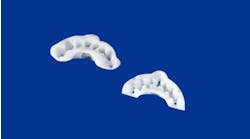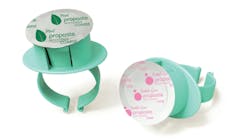Preventive tips aim to reduce risk for skin cancer
BY JOANN R. GURENLIAN, RDH, PhD
Summer is in full swing. What a great time to go to the beach, soak up the sun, sip some soothing cocktails, relax with friends, put some food on the barbecue, and work on that tan. Life is good ... with the exception of one tiny detail: While you are drinking in those rays, you are also putting yourself at risk for skin cancer. And so are your patients.
According to the Skin Cancer Foundation, skin cancer is the most common form of cancer in the United States. More than 3.5 million skin cancers occur in over two million people annually. One in five Americans will develop skin cancer in the course of his or her lifetime. Each year, the number of new cases of skin cancer exceeds the combined incidence of breast, prostate, lung, and colon cancers. Skin cancers include basal cell carcinoma, squamous cell carcinoma, and melanoma. Each type of skin cancer has a different appearance.
--------------------------------------------------
Other articles by Gurenlian
- The proximity of telehealth: Technology connects dental professionals in offsite locations
- Stop Premedicating!
- Making headway in providing access to care: The "head in the sand" attitude and prevailing resistance to change may be catching up with organized dentistry.
--------------------------------------------------
While I don't want to dampen your spirit about enjoying time in the sun, I do want to impress upon you the need to pay attention to the warning signs of skin cancer. Like many other cancers, skin cancer may be painless. Warning signs include:
• A skin growth that increases in size and appears pearly, translucent, tan, brown, black, or multicolored
• A mole, birthmark, beauty mark, or any brown spot that:
>> Changes in color
>> Increases in size or thickness
>> Changes in texture
>> Is irregular in outline
>> Is bigger than 6 mm or .25 inch (approximately the size of a pencil eraser)
>> Appears after age 21
• A spot or sore that continues to itch, hurt, crust, scab, erode, or bleed
• An open sore that does not heal within three weeks
If you see something that looks unusual, seek an evaluation from a dermatologist or another specialist.
Table 1 |
Skin Cancer Prevention Tips |
Seek the shade, especially between 10 a.m. and 4 p.m. |
Do not burn. |
Avoid tanning and ultraviolet (UV) tanning booths. |
Cover up with clothing, including a broad-brimmed hat and UV-blocking sunglasses. |
Use a broad-spectrum (UVA/UVB) sunscreen with an SPF of 15 or higher every day. |
For extended outdoor activity, use a water-resistant, broad-spectrum (UVA/UVB) sunscreen with an SPF of 30 or higher. |
Apply 1 ounce (approximately 2 tablespoons) of sunscreen to your entire body 30 minutes before going outside. Reapply every two hours or immediately after swimming or excessive sweating. |
Keep newborns out of the sun. Sunscreens should be used on babies over the age of six months. |
Examine your skin from head to toe every month. |
See your physician every year for a professional skin exam. |
Source: The Mini Skin Cancer Prevention Handbook available at Skin Cancer Foundation (skincancer.org) |
It is recommended that you perform a regular self-examination looking for the warning signs noted above. The Skin Cancer Foundation has body maps on its website (skincancer.org). As you examine your skin, mark a dot on the map, corresponding to each freckle, mole, birthmark, etc. Note the date of the first exam. For each exam after that follows, record any new findings and the date. You can share your self-examination findings with a dermatologist. If you are unsure of what you are examining, schedule an appointment with your doctor and have a full-body exam performed. Complete the body map together so you have an accurate representation of your existing freckles and moles, and you know what your "normal" is.
Once you have taken care of yourself, let's apply this valuable information to our patients. Yesterday, I went to greet my 10:00 patient. As I looked for her in the reception area, I saw a woman who resembled a lobster. Her face, legs, and arms were bright red. I commented that she certainly had caught some sun, and she reported that she had spent the weekend on her back patio with her family. She said that she had not realized how much sun exposure she'd had. This started a discussion about skin cancer. She told me that she likes to start the summer with a "good burn" because, she says, it helps her get "that summer glow" and "sets a tan that will last the season." I thought to myself, Well, OK, then. Her type of approach to sun exposure is basal cell carcinoma or melanoma waiting to happen.
But rather than admonishing her about sun worshipping, I jumped on the Internet and looked up the Skin Cancer Foundation's website. I showed her benign and malignant lesions, printed out the body map, and recommended she perform a self-exam. Then, I downloaded the preventive recommendations (see Table 1).
Skin cancer, like oral cancer, is serious. We have an opportunity to do a quick scan of our patients as they present to us in their shorts and T-shirts during the summer months. We are already performing a head and neck examination. Make copies of the skin cancer prevention tips in this column and pass it along to your patients who can't resist those UV rays! RDH
JOANN R. GURENLIAN, RDH, PhD, is president of Gurenlian & Associates, and provides consulting services and continuing education programs to health-care providers. She is a professor and dental hygiene graduate program director at Idaho State University, and president of the International Federation of Dental Hygienists.





